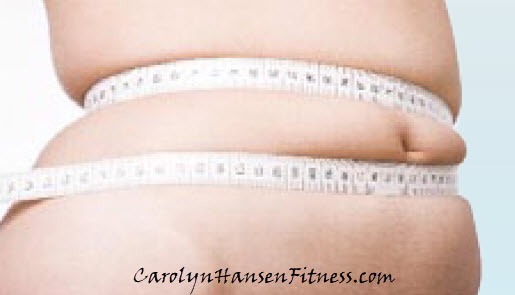
Just how damaging is it to be fat? Is there really a risk to your life if you are not living at your ideal size? Yes.
The physical discomforts of carrying excess weight, are too numerous to list, to say nothing of the mental anguish experienced when trying to return to a healthy weight/goal.
Truth is, fat affects both sexes, but men and women are genetically programmed to carry weight in different areas of the body.
Women struggle more with fat gain early on in life because their bodies are preparing for the hardships of pregnancy. They gather fat near the surface of the skin around the hips, butt and thighs. This type of fat is referred to as “subcutaneous fat.”
Men, on the other hand, seem to have resistance towards accumulating fat when younger, but eventually it catches up with them and they finally begin packing it on. Unfortunately, this type of fat tends to gather around their midsections, settling deep inside them as “visceral fat.”
Women aren’t exempt from visceral fat either. Once their bodies reach menopause and they lose their fountain of estrogen (that shuttles fat to the lower part of the body), any fat gained starts going to the midsection as visceral fat, just like it does with men.
Carrying excess fat anywhere on the body presents unneeded challenges for sure. However, carrying excess fat/weight around the mid-section is not only challenging and unattractive physically and mentally, it’s dangerous to your health.
What is visceral fat and why is it so bad?
“Belly fat” is visceral fat. It is biochemically active and more like a hormone-producing organ than an inert blob of tissue that simply stores energy. It surrounds and hugs the critical organs, like your liver and secretes compounds that affect the hormonal balance of your body, upsetting your metabolism.
This dangerous fat has been implicated in the development of type 2 diabetes (where the body becomes less and less responsive to the action of insulin – the hormone that regulates fat deposition) in both men and women. It is also linked with the development of cancer with evidence suggesting it causes breast cancer in women and prostate cancer in men.
In fact the risk of high cholesterol, heart disease, stroke, and even dementia rises with the accumulation of visceral fat.
So, how big a belly is too big?
When it comes to sizing up the extent of the problem it’s waist circumference that must be considered. For women the danger zone for complications from visceral fat begins when waist sizes exceed 35 inches, and for men, 40 inches.
Belly Fat Busters –
Stress Reduction – Stress is known to increase belly fat. It is perhaps the greatest invisible threat to your health and can cause you to get ill and to even fall over dead.
Healthier diet – The fastest way to get at belly fat is to change the type foods you consume. Believe it or not, 70% of your fats loss comes from making the right decisions regarding what you put on your plate.
Challenging Physical Activity – Not just any activity will do. If you really want to multiply your fat loss efforts, strength training (muscle building) routines must be added to your workouts.
The responsibility for your health and fitness falls directly on you.
If you truly want to take command of your life and avoid disease somewhere down the road – your muscles need to be in tip-top condition…strong and toned at all times – starting now.
“Reclaim Your Longevity” can help you do just that…
For more tools and resources from Carolyn Hansen to assist you in attaining your health and fitness goals and achieving the success you desire in life, please visit:
Here’s a great solution to building a strong core as well as giving your body an overall awesome workout in a short amount of time!
Check out my quick and easy…

 Project Me Finally Fit program
Project Me Finally Fit program